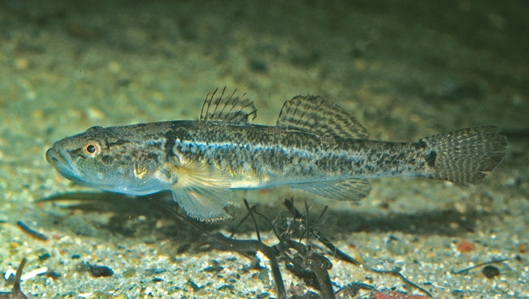General Description
Body slender, tapering towards tail; head large, flattened on top; gill openings wide; eyes widely-spaced; large males with bulbous cheeks; mouth small in females and young males, reaching beyond eye in large males. Greyish-yellowish brown with indistinct darker blotches below dorsal fins and a faint bar before dorsal fin. Sides of belly usually with 4-5 thin vertical bands. To 11 cm.
Biology
Although this species is usually found in coastal freshwater streams, individuals sometimes occur in the brackish areas of the lower reaches of streams, lakes and lagoons, including the lower reaches of the Yarra River in Victoria.
Distribution guide
South-eastern and eastern Australia.
Species Group
Depth
Max Size
11 cm
Commercial Species
No
Global Dispersal
Native to Australia
Conservation Status
- DSE Advisory List : Not listed
- EPBC Act 1999 : Not listed
- IUCN Red List : Not listed





